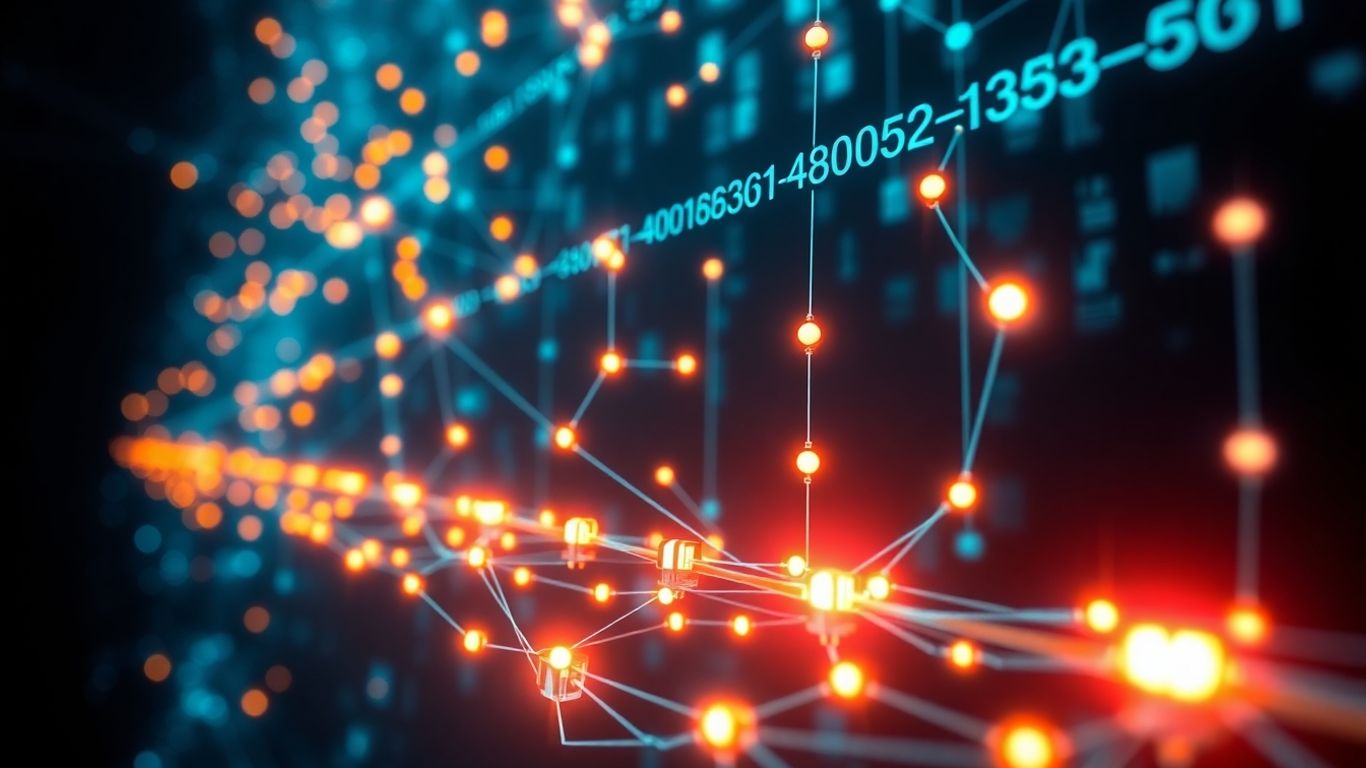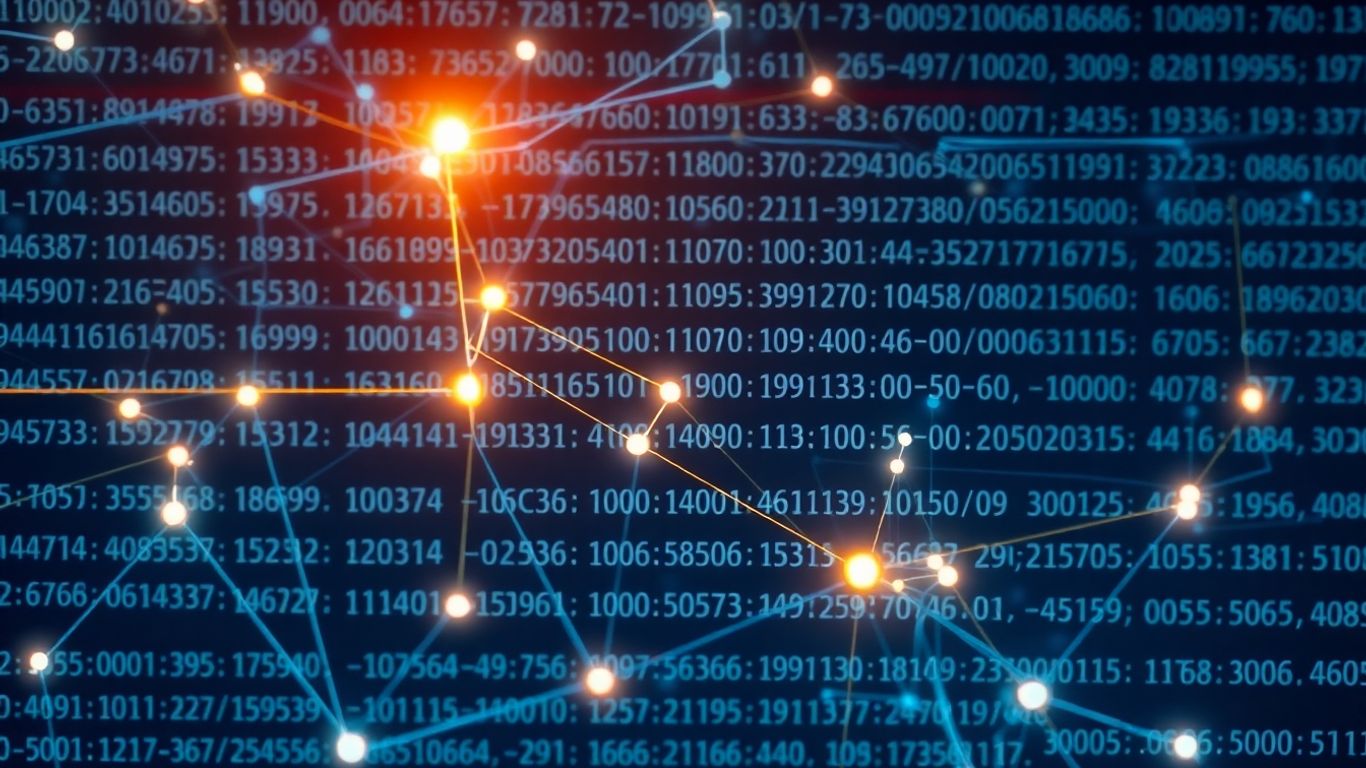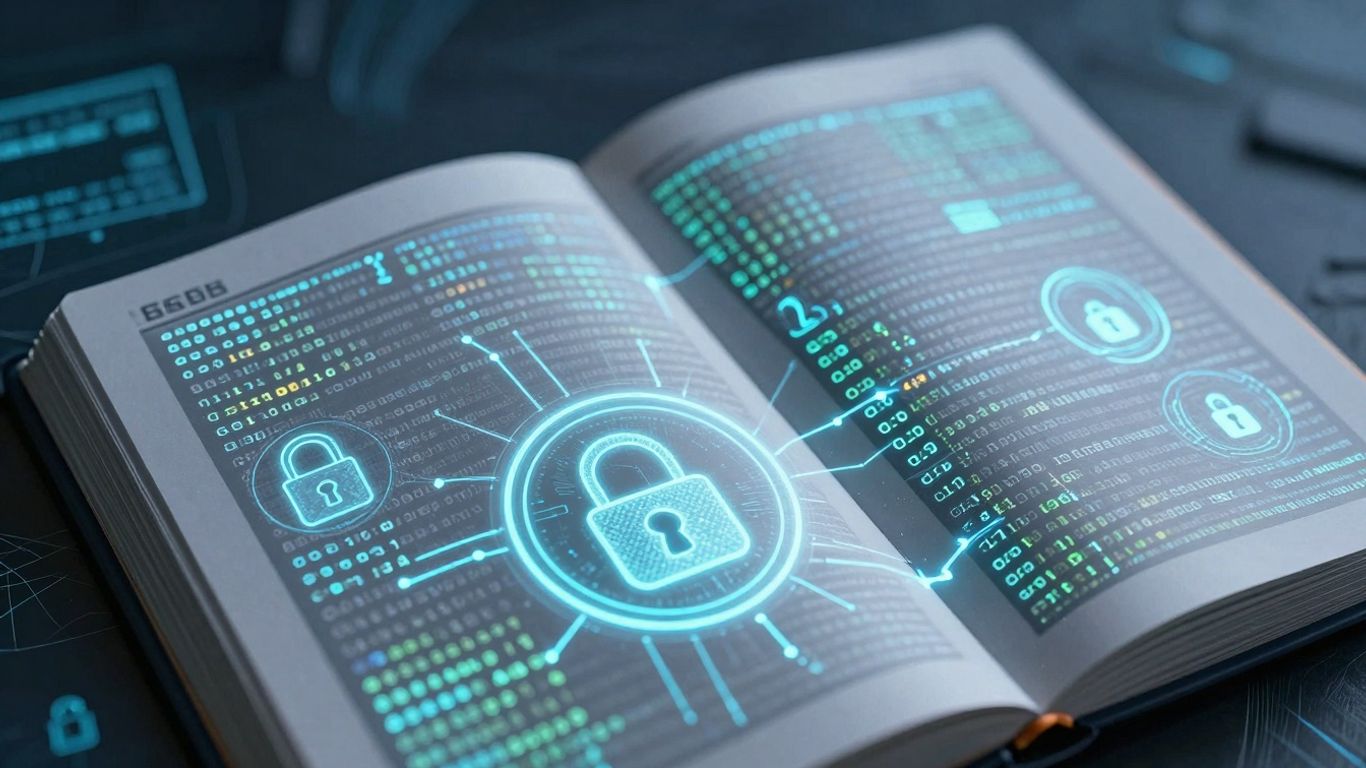[ newsletter ]
Stay ahead of Web3 threats—subscribe to our newsletter for the latest in blockchain security insights and updates.
Thank you! Your submission has been received!
Oops! Something went wrong. Please try again.
Learn about sanctioned address exposure check: its components, challenges, and implementation for effective compliance and risk mitigation.





In today's fast-paced financial world, keeping tabs on who you're doing business with is super important. One big part of that is making sure you're not accidentally working with someone or something that's on a sanctions list. This is where a sanctioned address exposure check comes in. It's basically a way to look at addresses and see if they're linked to any restricted parties. We'll break down what that means and why it matters.
So, what exactly is this "Sanctioned Address Exposure Check" we're talking about? Basically, it's a way for businesses, especially those dealing with money or valuable assets, to make sure they aren't accidentally doing business with people or groups that governments have put on a sanctions list. Think of it like a security guard checking IDs at the door, but for financial transactions. It's a pretty big deal for staying on the right side of the law and avoiding a whole lot of trouble.
At its heart, sanction screening is the process of comparing data – like names of customers, suppliers, or even transaction details – against official lists. These lists are maintained by various government bodies and international organizations. The goal is straightforward: to identify and flag any matches with individuals, companies, or countries that are subject to sanctions. This isn't just a suggestion; it's a critical part of a company's compliance program. It helps prevent financial crime and keeps your business out of hot water.
Compliance is a huge part of running any business these days, and sanction checks are a major piece of that puzzle. Regulators expect companies to have systems in place to avoid dealing with sanctioned parties. Failing to do so can lead to some serious penalties, not to mention a big hit to your company's reputation. It's about more than just avoiding fines; it's about responsible business practices. These checks are a key way to show you're serious about preventing illicit activities.
When we talk about sanctions lists, there are a few big names that come up again and again. These are the sources that most organizations rely on:
It's important to keep an eye on these and other relevant lists to make sure your screening is up-to-date. You can find more details on OFAC's sanctions lists and how they are used.
So, what actually goes into checking if an address is on a sanctions list? It’s not just a simple search and done deal. There are a few key pieces that make up a solid check.
This is the bread and butter of sanctions screening. It’s all about comparing the data you have – like customer names, addresses, and other identifying details – against official sanctions lists. Think of it like checking a guest list before a party. You want to make sure no one who's not supposed to be there gets in. The goal here is to catch potential matches early on.
This goes a step further than just checking who your customers are. Transaction screening looks at the actual money moving through your systems. It’s about making sure that the transactions themselves aren't linked to sanctioned individuals or entities, even if the primary account holder isn't directly on a list. This is especially important for financial institutions and payment processors.
This involves analyzing the flow of funds to identify any suspicious patterns or connections that might indicate sanctions evasion. It’s a more dynamic process than just checking static lists.
Relying on just one sanctions list is like trying to see the whole picture with only one eye. It’s not enough. Different countries and international bodies maintain their own lists, and they don't always perfectly overlap. To really cover your bases, you need to pull data from a variety of sources.
Here are some of the big ones:
Using multiple lists helps reduce the chances of missing a sanctioned party and provides a more robust defense against financial crime.
So, you're trying to keep your organization clean by checking addresses against sanctions lists. Sounds straightforward, right? Well, not always. It turns out there are quite a few hurdles to jump over.
First off, these sanctions lists aren't exactly simple. They're put out by different countries and international bodies, and each one has its own rules and reasons for listing someone. Trying to keep track of all of them, especially if you do business globally, is a headache. The lists change too, sometimes daily. What was okay yesterday might not be today. It’s like trying to hit a moving target.
Then there are the false positives. This is when the system flags someone or something that looks like it's on a list, but it's actually a mistake. Think of two people with the same common name, or slight spelling differences. It happens more often than you'd think. These false alarms can really slow things down. Your compliance team has to look into each one, which takes time and money. If you have a lot of transactions, this can become a huge backlog. It's a constant battle to make the system smart enough to catch the real threats without getting bogged down by the fakes. Refining how the system matches names and using better data can help, but it's an ongoing process.
Finally, let's talk about resources. Doing these checks properly takes good technology and skilled people. Many companies, especially smaller ones, just don't have enough of either. When you're dealing with a massive number of transactions every day, trying to screen them all in real-time can strain your systems and your budget. It’s a balancing act between being thorough and being efficient. You need the right tools to handle the load without breaking the bank or missing something important. Finding that sweet spot is key to effective sanctions screening.
Keeping up with sanctions is a constant race. Lists change, evasion tactics get smarter, and the sheer volume of data can be overwhelming. Organizations need systems that are not only accurate but also adaptable to this ever-shifting landscape.
So, you've got the basics of sanction screening down, but how do you actually make it work well in the real world? It's not just about having a list; it's about how you use it. Making sure your checks are up-to-date and actually catch what they're supposed to is key to staying out of trouble.
Think about it: sanctions lists change. A lot. What was okay yesterday might not be today. That's why running checks in real-time is a big deal. It means you're not relying on old data. You want to catch potential issues before a transaction goes through or a new customer is onboarded. This applies to both new clients and ongoing business. It’s like checking the weather right before you leave the house, not the day before.
Not all customers or transactions carry the same level of risk, right? Trying to screen everything with the same intensity can be a huge drain on resources. A risk-based approach means you focus more attention and resources on higher-risk areas. This could involve looking at specific industries, geographic locations, or transaction types that are known to be riskier. It's about being smart with your efforts, not just busy. For example, you might have stricter checks for international wire transfers to certain countries than for domestic debit card purchases.
When your screening system flags something, what happens next? You need a clear process for investigating and resolving these alerts. And critically, you need to keep records of everything. These logs are your proof that you're doing your due diligence. They show how you investigated an alert, why you decided it was a true match or a false positive, and what actions you took. This is super important if regulators ever come knocking. It's not just about fixing problems; it's about having a clear history of how you handled them. This helps protect your company and can be a lifesaver during audits or investigations. You can find more on best practices for global sanctions screening here.
Keeping good records isn't just busywork; it's your defense. It shows you're serious about compliance and have a system in place to manage risks effectively. Without it, you're essentially flying blind when it comes to proving your compliance efforts.

Navigating the world of sanctions compliance means understanding the rules set by various governments and international bodies. It's not just a suggestion; it's a legal requirement that can have serious consequences if ignored. Different countries and regions have their own specific lists and rules, and staying on top of them is a big part of the job.
Several key players are responsible for creating and maintaining sanctions lists. These lists are the backbone of any screening process. Think of them as the official "do not do business with" lists. Some of the most prominent ones include:
These lists are updated frequently, sometimes daily, as global events unfold. Keeping your screening systems aligned with these ever-changing lists is a constant challenge.
The specific rules you need to follow depend heavily on where your business operates and where your customers are located. For instance, in the U.S., OFAC operates under a strict liability standard, meaning ignorance isn't a valid defense against non-compliance. In the EU, directives like AMLD push for a risk-based approach to screening and record-keeping. The UK's Money Laundering Regulations (MLRs) also mandate ongoing screening, not just at the onboarding stage.
Here's a quick look at how some major jurisdictions approach screening:
It's clear that sanctions screening is a mandatory requirement in most major economic areas.
Ignoring sanctions regulations isn't just bad practice; it can lead to severe penalties. We're talking about significant financial fines that can run into millions of dollars. Beyond the monetary hit, there's the damage to your company's reputation, which can be even harder to recover from. Regulatory bodies can impose consent orders, launch lengthy investigations, and conduct on-site audits. For publicly traded companies, a sanctions violation can even lead to a drop in stock price. Ultimately, failing to screen properly can disrupt business operations, freeze assets, and lead to legal action.
The global financial system is interconnected, and sanctions are a tool used by governments to achieve foreign policy objectives. For businesses, this means that compliance isn't just about avoiding penalties; it's about participating responsibly in the global economy and protecting your own operations from the fallout of illicit activities.

Sanctions screening isn't just about matching names anymore. Think about it – a sanctioned individual might try to hide their involvement by setting up shell companies or using complex ownership structures. This is where looking beyond simple name matching becomes really important. We need to dig into who actually owns and controls these entities. This often involves understanding the concept of Ultimate Beneficial Owners (UBOs) and applying rules like the OFAC's 50% rule, which states that if a sanctioned party owns 50% or more of an entity, that entity is also considered sanctioned. It’s like peeling back layers of an onion to find the real person or group pulling the strings.
Then there are secondary sanctions. These are a bit trickier because they target foreign individuals or companies that do business with sanctioned countries or entities, even if those foreign actors aren't directly on a primary sanctions list themselves. It’s a way for a sanctioning country to extend its reach and pressure third parties to comply. For example, a company in Country A might be sanctioned for trading with Country B. If a company in Country C then does business with the sanctioned company in Country A, it could potentially face sanctions itself. This really broadens the scope of who needs to be screened and what connections need to be investigated.
Doing all this manually would be a nightmare, right? Thankfully, technology is stepping in. Advanced screening solutions use more than just basic algorithms. They can incorporate:
The landscape of sanctions is always shifting. New lists appear, existing ones are updated, and global events can change priorities overnight. Relying solely on basic checks is like trying to catch a fast-moving train with a fishing net – you're bound to miss a lot. Advanced techniques and technology are becoming less of a 'nice-to-have' and more of a 'must-have' for effective compliance.
So, we've looked at how to check if an address is linked to sanctioned entities. It's not just about a quick name search, though. You really need to dig into ownership and watch out for those tricky secondary sanctions. Having a solid screening program is key to staying on the right side of the law and avoiding big problems down the road. Remember, sanctions lists change, and so do the ways people try to get around them. Keeping up with these changes and using the right tools is super important for any business that wants to stay safe and keep operating smoothly.
It's like a security guard for financial stuff. It checks if any addresses or people you're dealing with are on a government 'do not deal with' list. This helps stop bad guys from using money for harmful things.
It's super important because it keeps your business out of trouble. If you accidentally do business with someone on the list, you could get in big trouble with the law, pay huge fines, and ruin your company's good name.
Governments and world groups make these lists. Some big ones are from the U.S. (OFAC), the United Nations (UN), the European Union (EU), and the United Kingdom (HM Treasury). They all have their own lists of people and places to avoid.
Computers are great at starting the check, like scanning names and addresses quickly. But sometimes, a computer might make a mistake and flag someone who isn't actually on the list. That's why real people often need to look at the computer's findings to make sure.
If you don't check, you might end up doing business with someone you shouldn't. This can lead to really big fines, your business might be shut down temporarily, and people won't trust you anymore. It's a serious problem.
You need to check when you first start working with someone (like when they open an account). But it's also smart to check again later, because lists change all the time. It's like keeping an eye on things to make sure nothing changes for the worse.


